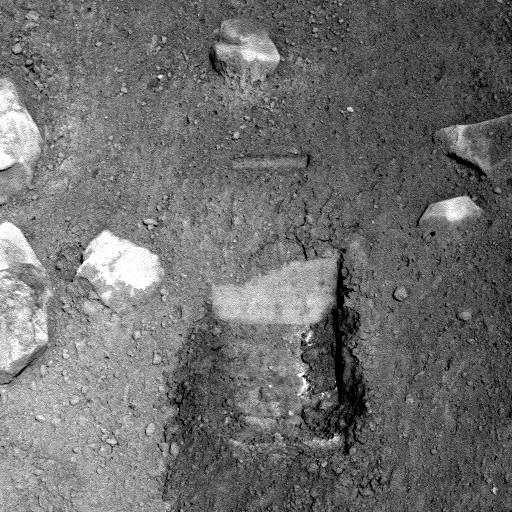The Phoenix lander used its robotic arm scoop to dig up soil on Mars surface for the first time during its activities during its seventh day on the Red Planet. The image above shows the hole dug by Phoenix, and below is a picture of the scoop itself, with the Martian soil inside.
The plan was to do a test dig and then dump the soil. If that works correctly, then Phoenix will dig another scoop and bring it to the TEGA device on board the lander, the Thermal and Evolved Gas Analyzer, a "furnace" and mass spectrometer instrument that scientists will use to analyze Martian ice and soil samples.
During its previous day's activities on Sol 6, Phoenix reached out and touched Mars with its robotic arm scoop to make an impression on the Martian surface. And please, no conspiracy theories here, but the impression looks like a footprint, and the Phoenix scientists have dubbed the mark "Yeti." Touching the surface was a preliminary test for the robotic arm and scoop, to make sure everything was working correctly before making the first scoop.
However, the TEGA device has experienced an intermittent short circuit, and the TEGA scientists are developing a procedure to work around the problem. But Phoenix can still deliver the soil sample to TEGA, and the sample can be held there until the device is working.
Original News Source:
Phoenix
 Universe Today
Universe Today
